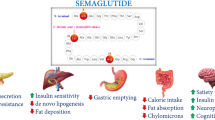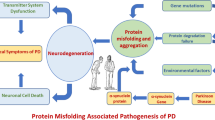Abstract
At the present time, treatment of two most common degenerative disorders of elderly population i.e., Type 2 Diabetes Mellitus (T2DM) and Alzheimer’s disease (AD) is a major concern worldwide. As there are several evidences that proved strong linkages between these two disorders, the idea of using dual therapeutic agent for both the diseases might be considered as a good initiative. Earlier reports have revealed that oral anti-diabetic drugs such as peroxisome proliferator activated receptor γ (PPARγ) agonists (thiazolidinediones) when used in T2DM patients suffering from AD showed improved memory and cognition. However, the underlying mechanism still needs to be deciphered. Therefore, the present study was carried out to find whether glimepiride, an oral antidiabetic drug which is a PPARγ agonist could inhibit the activity of acetylcholine esterase (AChE) enzyme. Actually, AChE inhibitors seize the breakdown of acetylcholine which forms the main therapeutic strategy for AD. Here, glimepiride showed dose dependent inhibitory activity against AChE enzyme with IC50 value of 235 μM. Kinetic analysis showed competitive inhibition, which was verified by in silico docking studies. Glimepiride was found to interact with AChE enzyme at the same locus as that of substrate acetylcholine iodide (AChI). Interestingly, amino acid residues, Q71, Y72, V73, D74, W86, N87, Y124, S125, W286, F295, F297, Y337, F338 and Y341 of AChE were found to be common for ‘glimepiride–AChE interaction’ as well as ‘AChI–AChE interaction’. Thus the present computational and kinetics study concludes that glimepiride and other thiazolidinediones derivatives could form the basis of future dual therapy against diabetes associated neurological disorders.



Similar content being viewed by others
References
Cummings JL (2004) Alzheimer’s disease. N Engl J Med 351:56–67
Forstl H, Kurz A (1999) Clinical features of Alzheimer’s disease. Eur Arch Psychiatry Clin Neurosci 249:288–290
Melnikova I (2007) Therapies for Alzheimer’s disease. Nat Rev Drug Discov 6:341–352
Citron M (2010) Alzheimer’s disease: strategies for disease modification. Nat Rev Drug Discov 9:387–398
Hitzeman N (2006) Cholinesterase inhibitors for Alzheimer’s disease. Am Fam Physician 74:747–759
Inestrosa NC, Alvarez A, Perez CA, Moreno RD, Vicente M, Linker C, Casanueva OI, Soto C, Garrido J (1996) Acetylcholinesterase accelerates assembly of amyloid-beta-peptides into Alzheimer’s fibrils: possible role of the peripheral site of the enzyme. Neuron 16:881–891
Sabbagh MN (2009) Drug development for Alzheimer’s disease: where are we now and where are we headed. Am J Geriatr Pharmacother 7:167–185
Davis KL, Thai LJ, Gamzu ER, Davis CS, Woolson RF, Gracon SI, Drachman DA, Schneider LS, Whitehouse PJ, Hoover TM (1992) A double-blind, placebo-controlled multicenter study of tacrine for Alzheimer’s disease, The Tacrine Collaborative Study Group. N Engl J Med 327:1253–1259
Xu SS, Gao ZX, Weng Z, Du ZM, Xu WA, Yang JS (1995) Efficacy of tablet huperzine-A on memory, cognition, and behavior in Alzheimer’s disease. Acta Pharmacol Sin 16:391–395
AD 2000 Collaborative Group (2000) Long-term donepezil treatmentin 565 patients with Alzheimer’s disease (AD2000): randomized double-blind trial. Lancet 363:2105–2115
Sussman JL, Harel M, Frolow F, Oefner C, Goldman A, Toker L, Silman I (1991) Atomic structure of Acetylcholinesterase from Torpedo californica: a prototypic acetylcholine-binding protein. Science 253:872–879
Ferris SH (2003) Evaluation of memantine for the treatment of Alzheimer’s disease. Expert Opin Pharmacother 4:2305–2313
Cavalli A, Bolognesi ML, Minarini A, Rosini M, Tumiatti V, Recanatini M, Melchiorre C (2008) Multi-target-directed ligands to combat neurodegenerative diseases. J Med Chem 51:347–372
León R, Garcia AG, Marco-Contelles J (2013) Recent advances in the multitarget-directed ligands approach for the treatment of Alzheimer’s disease. Med Res Rev 33:139–189
Lin L (2008) Commonality between diabetes and Alzheimer’s disease and a new strategy for the therapy. Clin Med Pathol 1:83–91
Akter K, Lanza EA, Martin SA, Myronyuk N, Rua M, Raffa RB (2011) Diabetes mellitus and Alzheimer’s disease: shared pathology and treatment. Br J Clin Pharmacol 71:365–376
Park S (2011) A common pathogenic mechanism linking type-2 diabetes and Alzheimer’s disease evidence from animal models. J Clin Neurol 7:10–18
Priyadarshini M, Kamal MA, Greig NH, Realef M, Abuzenadah AM, Chaudhary AG, Damanhouri GA (2012) Alzheimer’s disease and type 2 diabetes: exploring the association to obesity and tyrosine hydroxylase. CNS Neurol Disord Drug Targets 11:482–489
Exalto L, Whitmer R, Kappele L, Biessels G (2012) An update on type 2 diabetes, vascular dementia and Alzheimer’s disease. Exp Gerontol 47:858–864
Whitmer RA, Gustafson DR, Barrett-Connor E, Haan MN, Gunderson E (2008) Central obesity and increased risk of dementia more than three decades later. Neurology 71:1057–1064
Biessels GJ, Deary IJ, Ryan CM (2008) Cognition and diabetes: a lifespan perspective. Lancet Neurol 7:184–190
Messier C, Gagnon M (2009) Cognitive decline associated with dementia and type 2 diabetes: the interplay of risk factors. Diabetologia 52:2471–2474
Haan MN (2006) Therapy Insight: type 2 diabetes mellitus and the risk of late-onset Alzheimer’s disease. Nat Clin Pract Neurol 2:159–166
Qiu WQ, Folstein MF (2006) Insulin, insulin-degrading enzyme and amyloid-beta peptide in Alzheimer’s disease: review and hypothesis. Neurobiol Aging 27:190–198
Rizvi SMD, Shakil S, Biswas D, Shakil S, Shaikh S, Bagga P, Kamal MA (2014) Invokana (Canagliflozin) as a dual inhibitor of acetylcholinesterase and sodium glucose co-transporter 2: advancement in Alzheimer’s disease-diabetes type 2 linkage via an Enzoinformatics Study. CNS Neurol Disord Drug Targets 13:447–451
Shaikh S, Rizvi SMD, Shakil S, Riyaz S, Biswas D, Jahan R (2014) Forxiga (Dapagliflozin): plausible role in the treatment of diabetes associated neurological disorders. Biotechnol Appl Biochem. doi:10.1002/bab.1319
Ingkaninan K, Temkitthawon P, Chuenchon K, Yuyaem T, Thongnoi W (2003) Screening for acetylcholinesterase inhibitory activity in plants used in Thai traditional rejuvenating and neurotonic remedies. J Ethnopharmacol 89:261–264
Liu F, Wang Y, Yan M, Zhang L, Pang T, Liao H (2013) Glimepiride attenuates Aβ production via suppressing BACE1 activity in cortical neurons. Neurosci Lett 17:90–94
Combs CK, Johnson DE, Karlo JC, Cannady SB, Landreth GE (2000) Inflammatory mechanisms in Alzheimer’s disease: inhibition of b-amyloid-stimulated proinflammatory responses and neurotoxicity by PPARg agonists. J Neurosci 20:558–567
Heneka MT, Reyes-Irisarri E, Hull M, Kummer MP (2011) Impact and therapeutic potential of PPARs in Alzheimer’s disease. Curr Neuropharmacol 9:643–650
Mushtaq G, Khan JA, Kumosani TA, Kamal MA (2015) Alzheimer’s disease and type 2 diabetes viachronic inflammatory mechanisms. Saudi J Biol Sci 22:4–13
Yarchoan M, Arnold SE (2014) Repurposing diabetes drugs for brain insulin resistance in Alzheimer disease. Diabetes 63:2253–2261
Cheng C, Lin CH, Tsai YW, Tsai CJ, Chou PH, Lan TH (2014) Type 2 diabetes and antidiabetic medications in relation to dementia diagnosis. J Gerontol Ser A Biol Sci Med Sci 69:1299–1305
Gupta R, Gupta LK (2012) Improvement in long term and visuospatial memory following chronic pioglitazone in mouse model of Alzheimer’s disease. Pharmacol Biochem Behav 102:184–190
Houghton PJ, Agbedahunsi JM, Adegbulugbe A (2004) Choline esterase inhibitory properties of alkaloids from two Nigerian Crinum species. Phytochemistry 65:2893–2896
Gutiérrez M, Arévaloa B, Martínezb G, Valdésa F, Vallejosc G, Carmonad U, Martine AS (2015) Synthesis, molecular docking and design of Tetra hydroquinolines as acetylcholinesterase inhibitors. J Chem Pharm Res 7:351–358
Watson GS, Cholerton BA, Reger MA, Baker LD, Plymate SR, Asthana S, Fishel MA, Kulstad JJ, Green PS, Cook DG, Kahn SE, Keeling ML, Craft S (2005) Preserved cognition in patients with early Alzheimer disease and amnestic mild cognitive impairment during treatment with rosiglitazone: a preliminary study. Am J Geriatr Psychiatry 13:950–958
Sato T, Hanyu H, Hirao K, Kanetaka H, Sakurai H, Iwamoto T (2009) Efficacy of PPAR-gamma agonist pioglitazone in mild Alzheimer disease. Neurobiol Aging 32:1626–1633
Shaikh S, Ahmad SS, Ansari MA, Shakil S, Rizvi SMD, Shakil S, Tabrez S, Akhtar S, Kamal MA (2014) Prediction of comparative inhibition efficiency for a novel natural ligand, Galangin against human brain Acetylcholinesterase, butyrylcholinesterase and 5-Lipoxygenase: a Neuroinformatics study. CNS Neurol Disord Drug Targets 13:452–459
Somani G, Kulkarni C, Shinde P, Shelke R, Laddha K, Sathaye S (2015) In vitro acetylcholinesterase inhibition by psoralen using molecular docking and enzymatic studies. J Pharm Bioallied Sci 7:32–36
Geromichalos GD, Lamari FN, Papandreou MA, Trafalis DT, Margarity M, Papageorgiou A, Sinakodx ZJ (2012) Saffron as a source of novel acetylcholinesterase inhibitors: molecular docking and in vitro enzymatic studies. Agric Food Chem 60:6131–6138
Shaikh S, Zainab T, Shakil S, Rizvi SMD (2015) A neuroinformatics study to compare inhibition efficiency of three natural ligands (Fawcettimine, Cernuine and Lycodine) against Human Brain Acetylcholinesterase. Network Comput Neural Syst 26:26–35
Alam A, Shaikh S, Ahmad SS, Ansari MA, Shakil S, Rizvi SMD, Shakil S, Imran M, Haneef M, Abuzenadah AM, Kamal MA (2014) Molecular interaction of human brain acetylcholinesterase with a natural inhibitor Huperzine-B. An Enzoinformatics approach. CNS Neurol Disord Drug Targets 13:487–490
Bartolini M, Bertucci C, Cavrini V, Andrisano V (2003) Beta amyloid aggregation induced by human acetylcholinesterase: inhibition studies. Biochem Pharmacol 65:407–416
Xu Y, Colletier JP, Weik M, Jiang H, Moult J, Silman I, Sussman JL (2008) Flexibility of aromatic residues in the active-site gorge of acetylcholinesterase: X-ray versus molecular dynamics. Biophys J 95:2500–2511
Acknowledgments
Shaikh S is supported by INSPIRE grant from Department of Science & Technology, New Delhi, India (Grant Number: IF130056), which is sincerely acknowledged. Shazi Shakil thanks all of the staff of Center of Innovation in Personalized Medicine (CIPM), King Abdulaziz University, Saudi Arabia for continued support.
Author information
Authors and Affiliations
Corresponding author
Ethics declarations
Conflict of interest
The authors declare that there is no conflict of interests regarding the publication of this paper.
Rights and permissions
About this article
Cite this article
Rizvi, S.M.D., Shaikh, S., Naaz, D. et al. Kinetics and Molecular Docking Study of an Anti-diabetic Drug Glimepiride as Acetylcholinesterase Inhibitor: Implication for Alzheimer’s Disease-Diabetes Dual Therapy. Neurochem Res 41, 1475–1482 (2016). https://doi.org/10.1007/s11064-016-1859-3
Received:
Revised:
Accepted:
Published:
Issue Date:
DOI: https://doi.org/10.1007/s11064-016-1859-3




